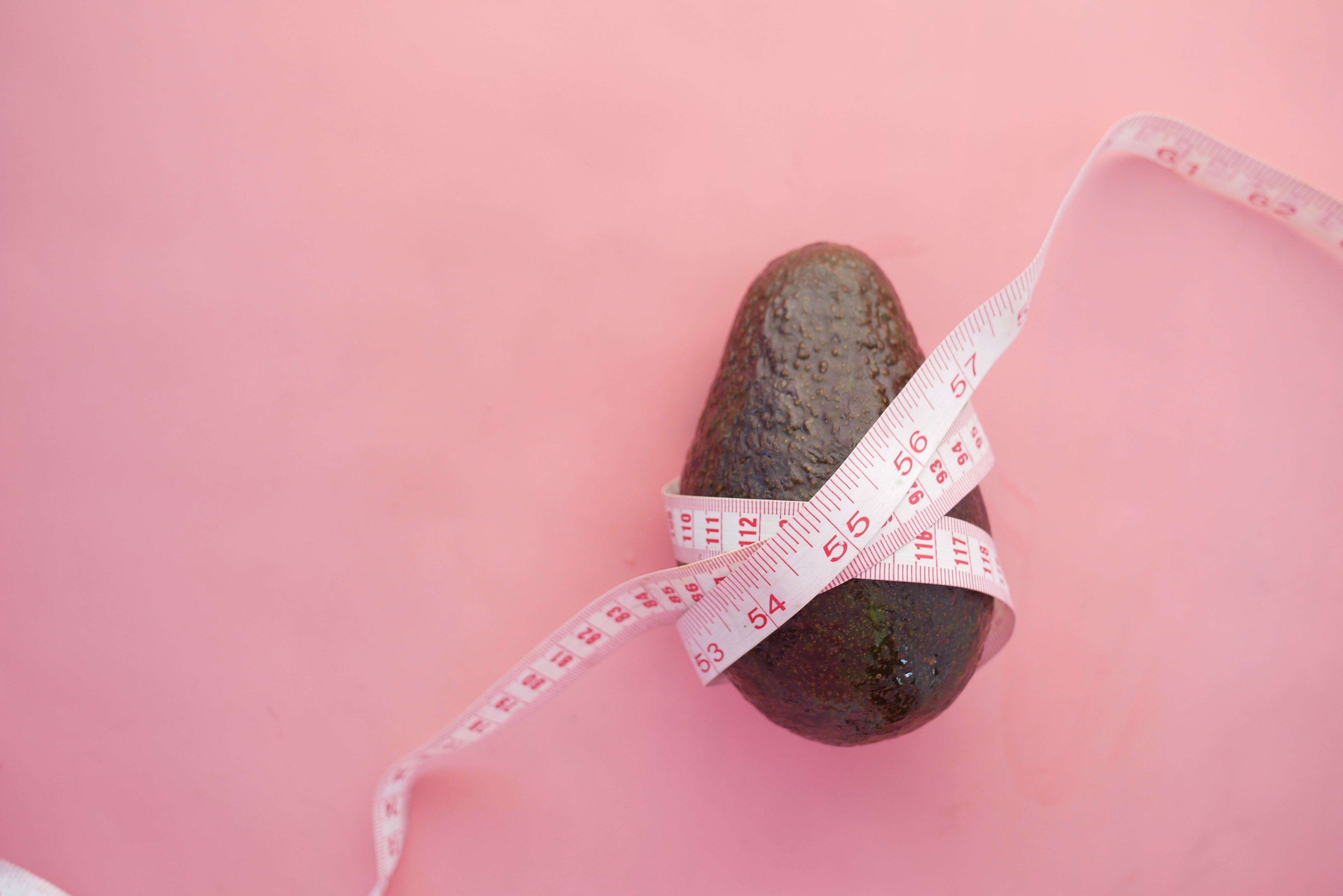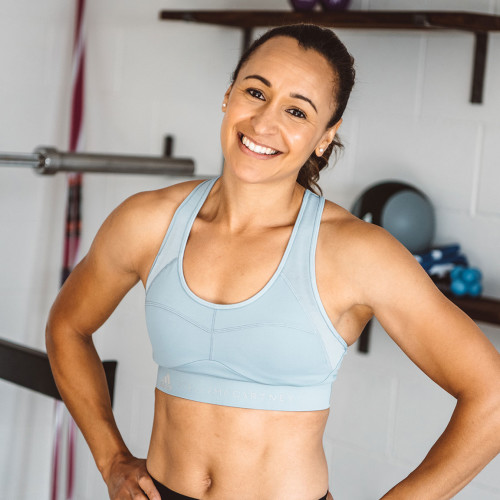How to diet during perimenopause… and why crash diets won’t work
a year ago
Perimenopausea year ago
Perimenopause
Worried about perimenopausal weight gain? Tried keto / atkins / fasting and more? Then here’s the real secret of weight management with a little help from Menopause Dietician, Nigel Denby.
The key to safely cracking perimenopause weight loss isn’t about cutting carbs or going on an intense juice cleanse. It’s about first understanding the changes that are happening in your body and then applying sustainable lifestyle changes that actually work.
Here, we speak to Nigel Denby RD BSc, Specialist Menopause Dietitian and founder of Harley Street At Home , about how to crack the code on perimenopause weight management.
“There’s good clinical evidence showing us around 75% of women during perimenopause will gain anywhere up to around 10 kilos; about a stone and a half or roughly one dress size,” says Denby. There are a couple of different reasons why this happens:
Many women in perimenopause and the early post-menopause years gain fat mass as their oestrogen levels drop. Typically you’ll notice women talk about their tummy as their ‘problem area’, rather than the thighs or hips.
This is because of the hormone oestrogen, which “gives women their hourglass shape from puberty and beyond,” explains Denby. “As levels of oestrogen decrease during perimenopause, it alters the way that women lay down fat, and they may notice they lose that defined waist area.”
Even if you’re taking HRT, which replaces the levels of oestrogen that are declining in the body, it “won’t be enough” to reverse this new fat-laying pattern, says Denby.
Hormonal changes alone don't necessarily cause menopause weight gain. “From the age of about 35, both men and women lose muscle tissue in the natural process of aging,” notes Denby.
“Losing muscle mass has been shown to slow the rate of your metabolism by as much as 100 to 200 calories per day. This can make it more difficult to maintain your usual weight.”
Add to this unhealthy eating habits, an increase in alcohol consumption to manage stress, lack of sleep from night sweats and the propensity to exercise less as you get older, and it quickly becomes clear how midlife weight gain can be a multi-faceted problem, caused by a combination of health and lifestyle changes.
There are weight loss strategies that are much more enjoyable, effective and sustainable than crash dieting
If you’ve gained weight and you’re determined to lose it, your strategy might be to spend two weeks drastically cutting calories, skipping breakfast and opting for liquid meals like soups and shakes.
Initially you might lose some weight during the dieting period, but Nigel says that after a few weeks of returning to your usual eating habits, you might be shocked to realise you’ve quickly put the weight back on - and more.
“Let's say you do the Ketogenic diet for a month and you lose a stone and a half,” says Nigel. “Around two thirds of that weight loss will be fat and a third of it will be muscle.”
As we mentioned earlier, muscle loss can slow down your metabolism - the body’s process of turning food to energy. “By crash dieting, you slow your metabolic rate down even further,” warns Denby. “When you eventually stop the Keto diet and you go back to your old eating patterns, you're going to gain more than you lost because you’ve lost that all-important muscle.”
Essentially, there are no quick fixes or fads for weight gain at this period of life - in fact, they can set you back even further.
“Once you’re approaching the menopause, your lost oestrogen levels don't come back,” says Nigel. “That’s why it’s important to understand that the way to manage your weight is through a consistent lifestyle change.”
If you want to speed your metabolic rate up, you need to switch from cardio to strength and resistance training
The positive news is that there are weight loss strategies that are much more enjoyable, effective and sustainable than crash dieting.
Even better, you can reverse the course of weight gain and feel happier and healthier by following Nigel’s nutrition tips:
A food journal can help you to lose weight by making you more aware of when, what, and why you're eating.
“Start by jotting down your weekly food intake in a notebook,” says Denby. “By doing this, you might be surprised to notice unconscious eating patterns. You could be grazing out of the fridge while you’re cooking dinner, drinking half a bottle of wine a night or snacking during the day at work.”
Once you’ve noted down your eating habits, you can start to look at simple ways you can gently cut back on calories. The key here is not to go for a drastic reduction.
“For sustainable weight loss during the perimenopausal years, I recommend my clients look to reduce their calorie intake by 300 or 400 each day. This is key advice for women who are currently eating the NHS-recommend 2,000 calories per day or more,” says Nigel. “Any less than this and you’ll likely not be getting the nutrients that your perimenopausal body needs.”
Extreme calorie-restrictive diets can cut our food intake to as little as 1,200 calories per day, which Nigel says is neither healthy or sustainable.
If you want to speed your metabolic rate up, Nigel says that you need to think about switching from cardio to strength and resistance training.
“Exercise is a non negotiable at this time of life, but many women don’t realise that they must be doing strength training,” says Denby. “You can go to six Zumba classes per week, but without strength training and restorative work to look after your muscles, you’re not going to get the weight loss and definition results you want.”
You don’t have to be in the gym deadlifting super heavy weights either. “A pilates class with resistance bands is all you need,” says Denby. Other options are bodyweight resistance HIIT or lighter free weights.
Consistency is key and a little goes a long way. “Ten minutes of free weight training at home each day is better than one intense weekly session with a personal trainer,” says Denby. “If you can do four sets of 10 squats a day, and feel that slight tenderness afterwards, that's all you need - as it’s a sign that the muscles are rebuilding.”
You don’t have to ditch cardio altogether either. One session of running, cycling or swimming per week can help you to reap the cardiovascular benefits of movement without losing the muscle mass you need to keep your metabolism ticking over.
Okinawa in Japan is one of the world's blue zones regions - a term for regions of the world where people tend to live longer, often reaching up to 90 and even 100 years old.
People in Blue Zones areas like Okinawa have one key thing in common: they stop eating when their stomachs are 80% full and eat their smallest meal in the early evening.
With this in mind, keep an eye on the size of your plate to make sure you aren’t eating past the point of satiety. “A good rule of thumb is to plate up meals that would fit into your cupped hands,” says Nigel.
Eat slowly and mindfully and plan for mealtimes to be a device-free zone
Most of us are so busy scrolling on our phones, watching the TV or checking emails that we don’t consciously realise when we’re full, causing us to unnecessarily overeat and drive up our calorie intake.
“Eat slowly and mindfully,” says Nigel, “and plan for mealtimes to be a device-free zone so that you can check in with how satisfied you’re feeling.”
If you're feeling rough from symptoms like hot sweats and brain fog, you might turn to alcohol for comfort. But if you’re rounding off the day by reaching for a glass of wine, your calorie intake may be much higher than you realise.
To put it into context, a large 250ml glass of wine is 200 calories, a pint of beer is 200 calories and a gin and tonic is 150 calories.
“We can't get away from the fact that, next to fat (at nine calories per gram), alcohol (at seven calories per gram) is the second most calorific thing we consume,” says Nigel. And if we want to cut 300-400 calories from our diet a day, this is probably a good place to start.
One major factor that contributes to excess weight gain in menopausal women is insulin resistance, caused by slower oestrogen and progesterone production.
“Insulin resistance tends to lead to centrally deposited fat, and vice versa,” says Nigel. “As women start to gain more weight in perimenopause, the rate of this insulin resistance starts to go through the roof. This leads to an increased risk of poor cholesterol, high blood pressure and certain cancers.”
He continues: “One thing that can help manage insulin resistance is losing about 10% of your body weight, but also consuming carbohydrates that don't cause a spike in blood sugars.”
Good examples of low-glycemic carbs include sweet potatoes, baby new potatoes, basmati rice, couscous, bulgar wheat, quinoa and oats.
Around 75% of women experience hot flashes, which can add to stress and insomnia, both of which can quickly derail your healthy eating goals.
“ Studies have found that soya can help with severe hot flashes,” says Denby. “While it may reduce the frequency and the intensity of them, it won't get rid of them entirely - and you’ll need to eat 26 grams of soya protein a day to get the benefit.
“Still, it’s a good option for women who don’t want to go down the Hormone Replacement Therapy (HRT) route.”
It can be difficult to know how to eat balanced meals, especially if you’re busy and don’t have time to religiously count your macros. Luckily, Nigel has a handy trick for getting your portions of the food groups just right.
“Split your plate into four quarters: one quarter protein, one quarter carbs and half the plate fruit, vegetables or salad,” he instructs. “That will pretty much always keep the balance of the food groups right.”
You can use this trick for most meals - even when you’re out at a restaurant. “If you go for fish and chips, opt for a small portion of fish, a small portion of chips, and make half of your plate mushy peas and a big salad.”
Keep snacks to around 100 calories, too. “You could eat a piece of malt loaf and some cream cheese, hummus and carrot sticks - nothing fancy, but it will give you a top up of energy between meals so you go into lunch or dinner feeling hungry but not ravenous.”
If it sounds too good to be true, it probably is
Pledging to abstain from all the treat foods you love isn’t just miserable, it’s probably unsustainable in the long-run too.
“I always urge my clients to think about the value of the food that you're eating,” says Denby. “If you’re going to eat crisps and chocolate, or drink alcohol, it's good to remember that it’s not bringing much nutritional value to the table.”
He suggests making these indulgences a treat rather than a regular occurance. “If wine is your ‘thing’ and you're currently having a glass every night, try to abstain until Friday to celebrate the end of the week instead.
“Many women find that simply opting for booze-free days can help them to reduce their calories enough to see results."
“Weight loss at midlife is nothing complicated and there’s no whacky celebrity diet that will get you there quicker,” says Nigel. “If you simply cut your calorie intake by 300-400 calories a day and couple it with strategic strength-based exercise, you’ll get results.”
Think about speaking to a registered dietician who can help you to put together a balanced eating plan.
“GPs are likely to give you general advice that’s not specific to this time of life,” says Nigel. “Handily, there’s lots of free information online through apps like Instagram [you can follow Nigel on @menopuase_dietician ], but it’s important to look for voices that are qualified to give information.”
He continues: “Anyone can call themselves a registered nutritionist these days but the dietician title is protected. The Health and Care Professions Council has a search function so you can check a dietician’s individual credentials.”
He adds that we should also be wary of what we read online and always approach weight loss advice with a sensible head. “No matter what an Instagram post might say, there are no magic weight loss ingredients or methods for the perimenopause,” says Denby. “If it sounds too good to be true, it probably is.”
 Cycle syncing
Cycle syncing Perimenopause
Perimenopause Perimenopause
Perimenopause Perimenopause
PerimenopauseSign up to learn everything you need to know about CycleMapping, plus how you can live better and feel better through optimising your fitness to you.
This website uses cookies to ensure you get the best experience on our website. Learn more

Sign up for the very latest news on women's fitness, health and hormones, plus be the first to receive exclusive offers and extras